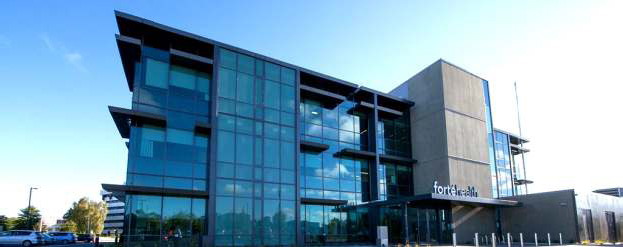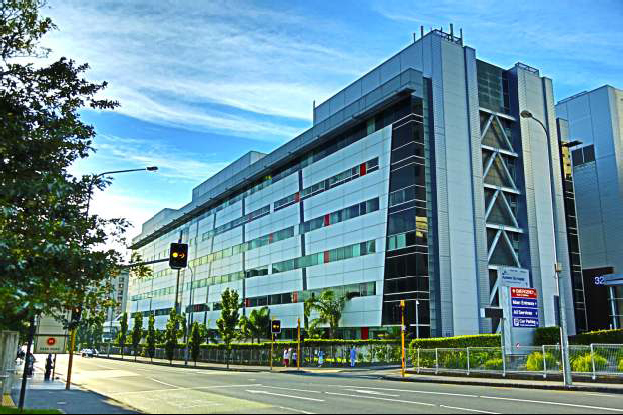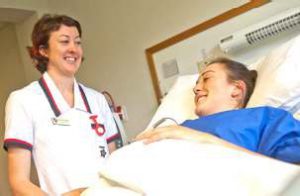Medical innovation in New Zealand is an outward looking sector as around 90 per cent of the devices and technology solutions developed in New Zealand are exported
New Zealand is a developed country and ranks highly in international comparisons of national performance, such as quality of life, health, education and economic freedom. The country underwent major economic changes during the 1980s, which transformed it from a protectionist to a liberalized free-trade economy.
The service sector dominates the national economy, followed by the industrial sector, and agriculture.International tourism is also a significant source of revenue.
The health care system of New Zealand has experienced significant improvements throughout the past several decades. From an essentially fully public system in the early 20th century, reforms have introduced market and health insurance elements primarily in the last three decades, creating a mixed public-private system for delivering healthcare.

In 2012, New Zealand spent 8.7 per cent of GDP on healthcare, or $3, 929 per capita. Of that, approximately 7 7 percent wa s government expenditure. In a 2010 study, New Zealand was shown to have the lowest level of medication use in 14 developed countries (i.e. used least medicines overall), and also spent the lowest amount on healthcare amongst the same list of countries, with $2,510 ($3,460) per capita, compared to the United States at US$7,290.
Complex network
A complex network of organizations and people deliver health services in New Zealand. Each have their role in working with others across the system to achieve better health for New Zealanders. Important roles in providing services and ensuring efficiency and quality are undertaken by public health units, primar y health organizations, non-government organizations, crown entities, health professionals, and professional and regulatory bodies for all health professionals – including all medical and surgical specialist areas, nurses and allied health groups.
There is a range of educational and research institutions involved in the provision of services and training of the workforce. There are also many consumer bodies and non-government organizations that provide services and advocacy for the interests of different groups, and more formal advocacy and inquiry boards, committees and entities.
The Ministry of Health has a range of roles in the system in addition to being the principal advisor and support to the minister. It funds a range of national services, including disability support and public health services, and has a number of regulatory functions. The Accident Compensation Corporation (ACC) funds accident services. This network of organizations is linked through a series of funding and accountability arrangements to ensure performance and service delivery across the health and disability system.
Vibrant technology invention
There is a vibrant eco-system of health technology invention in New Zealand and Kiwi-developed medical devices are now marketed to the world. It’s a sector increasingly seen as a breeding ground for health technology innovation and excellence.

Experts highlight that medical innovation in New Zealand is a very outward looking sector. In fact, around 90 per cent of the devices and technology solutions developed in New Zealand are exported. Exports of medical technology alone (excluding Health IT) cracked the $700 million barrier in 2015. This sector invests $66m in research and development annually and that is expected to increase as New Zealand companies see opportunities to grow their businesses overseas.
The District Health Boards’ focus on cost efficiency and a stronger policy on medical device market as the market is expected to post steady, if unspectacular, growth in the next few years, the report estimates the CAGR for 2013-2018 to be 3.7 per cent. This will take the market to $1,008.0 million by the end of 2018, equal to $213 per capita. The orthopaedics & prosthetics market is expected to be the best sector for growth, driven by the rising availability of new technologies and an ageing population.
Nearly the entire market is supplied by imports. These reached $810.5 million in 2013, compared with the $661.2million reported for 2012. In the 2009-2013 periods, imports grew by a CAGR of 8.7 per cent in US dollar terms and 5.4 per cent in local currency terms.
Annual exports reached a new high of $525.2 million in 2013. In CAGR terms, growth was 14.0 per cent in the 2008-2013 period. As in previous years, the bulk of this was made up of exports of therapeutic appliances, for which New Zealand mainly manufactures for exporting.
New Zealand has a relatively small but growing medical device manufacturing sector made up of around 60 companies. The largest is Fisher & Paykel, which produces high quality equipment mainly for export but there are a number of smaller companies focused on niche areas that are also developing their export profile. According to MTANZ, the industry generates revenue of around NZ$1.4 billion (USD $1.1billion) per annum, and it expects this to double in the next 3-5 years.
In a 2010 study, New Zealand was shown to have the lowest level of medication use in 14 developed countries, and also spent the lowest amount on healthcare amongst the same list of countries, with $2,510 ($3,460) per capita, compared to the United States at US$7,290
Medical Equipment industry
The Medical Equipment sector continues to offer high quality business and consulting opportunities for American suppliers. With ongoing changes in the structure of procurement channels and various competing opinions as to how this should be ideally managed, American suppliers of all sizes find a receptive market that seeks value-based outcomes and a distributor market that is sufficiently well-informed to market American products and services.
Telehealth and innovative technologies are a key focus for the New Zealand government as it seeks to leverage advances in communications and data management, as well as the rise of wearables and remote diagnostics. Several research and development units have been established that share ideas and opportunities, and look to learn from partnership arrangements without side organizations and institutions.
New Zealand has a relatively small but growing medical device manufacturing sector made up of around 60 companies. According to MTANZ, the industry generates revenue of around NZ$1.4 billion (USD $1.1billion) per annum, and it expects this to double in the next 3-5 years.
Pharmaceutical Management Agency (PHARMAC)
PHARMAC is the New Zealand government agency that decides which pharmaceuticals to publicly fund in New Zealand. PHARMAC makes choices about District Health Boards’ (DHBs’) spending on vaccines, community and cancer medicines. PHARMAC also makes decisions about the medicines funded in DHB hospitals and is working towards budget management of hospital medicines and medical devices.
Recently, PHARMAC announced the following changes to the funding of enzyme replacement therapy (ERT) used in the treatment of the rare disorder Gaucher disease: The funded ERT for the treatment of Gaucher disease will change from imiglucerase (Cerezyme), supplied by Sanofi, to taliglucerase alfa (Elelyso), supplied by Pfizer. Taliglucerase alfa will be funded from August 2018 and will become the only funded ERT for the treatment of Gaucher disease after a 7-month transition period.
 Special Authority and Hospital Restrictions will apply to taliglucerase alfa. If approved by the Gaucher Panel, the criteria allow for a higher maximum dose of 30 units/kg every other week (~60 units/kg/month) where clinically appropriate. This may provide additional clinical benefits for some patients.
Special Authority and Hospital Restrictions will apply to taliglucerase alfa. If approved by the Gaucher Panel, the criteria allow for a higher maximum dose of 30 units/kg every other week (~60 units/kg/month) where clinically appropriate. This may provide additional clinical benefits for some patients.
Moreover, PHARMAC made another announcement regarding treatment option for patients with severe osteoporosis following the funding of denosumab, brand name Prolia, from July 2018. Osteoporosis is a condition that weakens the bones and increases the risk of fractures, and is common in people aged 50 years and over.
PHARMAC Director of Operations Lisa Williams says that denosumab will provide people with osteoporosis a chance of reducing injuries that can have a big impact on their daily lives.
“Osteoporosis is a serious illness that causes bone fractures and this can significantly affect the quality of life for people who have it. The most significant injuries can be hip or vertebrae fractures. This can result in long recovery times, affecting the ability of people to live normal lives. Denosumab will reduce the chance of these serious injuries.
New Zealand Medical Association
The New Zealand Medical Association (NZMA) is the country’s fore most pan-professional medical organization in New Zealand representing the collective interests of all doctors. Its members come from all disciplines within the medical profession, and include specialists, general practitioners, doctors-in- training and medical students. The NZMA is a strong advocate on medico-political issues, with a strategic programme of advocacy with politicians and officials at the highest levels.
Health was a big issue during the 2017 Election and as political parties debate future health policies as part of coalition negotiations, the NZMA urges them to invest in the health of New Zealanders. The NZMA has recently published its Position Statement Health as an Investment.
“Too often, the conversation about public health care is framed as a ‘cost’ to government. This needs to change,” says NZMA Chair, Dr. Kate Baddock. “Health spending is an investment in the health, wellbeing and productivity of New Zealanders and ultimately saves money in other sectors.
“Other countries are achieving a return on investment of nearly $5 for every $1 of government spending on health. Health spending must not be seen as a drain on the economy but rather an opportunity to boost the economy and improve the lives of individuals and their families. Success will also require a commitment to address the social determinants of health such as education, housing and poverty,” says Dr Baddock.
“Nearly 80 years ago New Zealand led the world when we established a public healthcare system that made health a universal and fundamental right – it’s time our political leaders invest in that promise.”
















